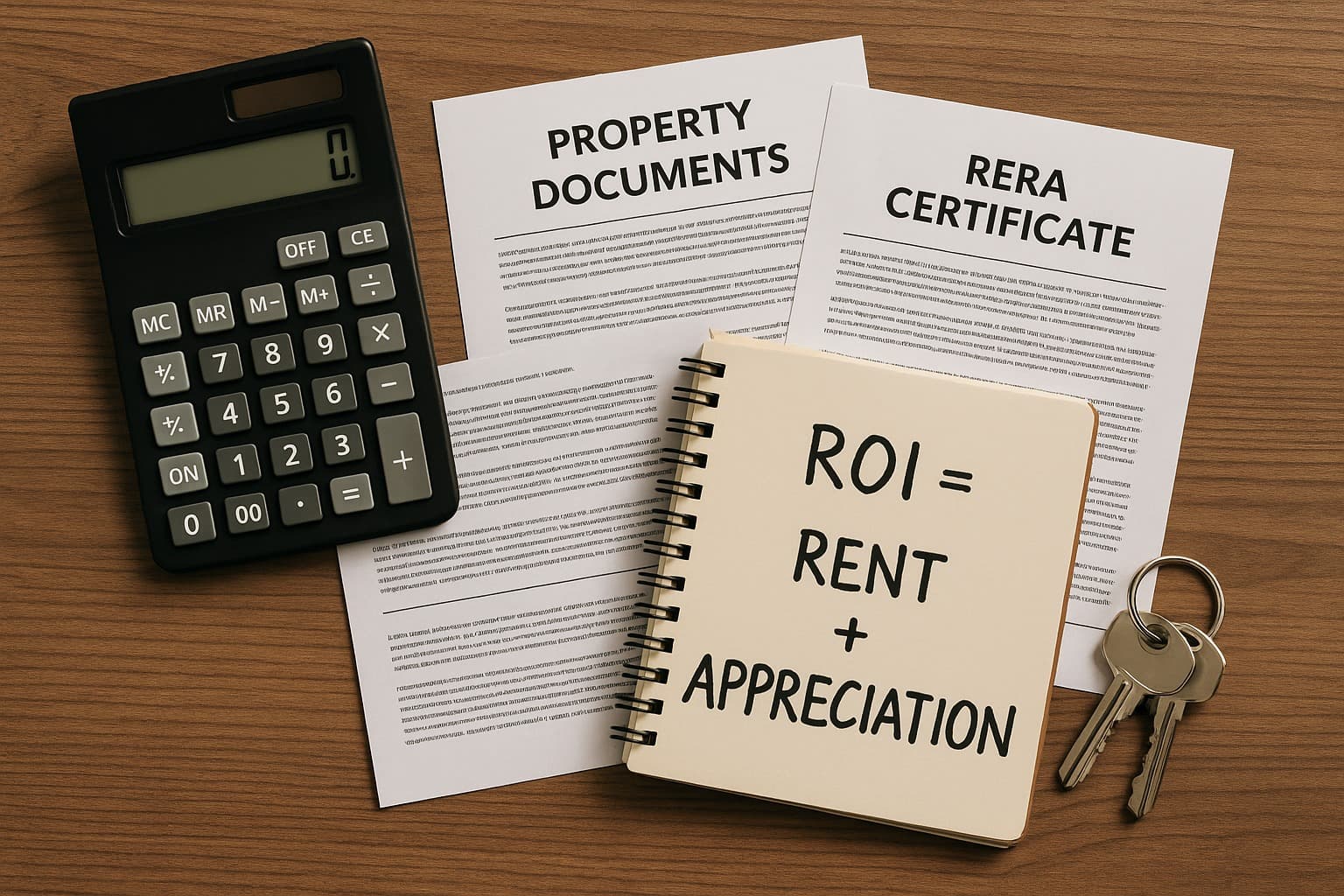How to Analyze Investment Opportunities in Real Estate
Summary
This blog post provides comprehensive insights and practical guidance on How to Analyze Investment Opportunities in Real Estate. It covers key concepts and offers valuable tips for readers.

Imagine this: you hear your friend bragging, “Bhai, I bought a flat last year and it’s already gone up by 20%!” You smile, but inside you’re thinking — how do people even figure out which property is worth it?
That’s where the real game is: knowing how to analyse investment opportunities. It’s not luck. It’s not magic. It’s a mix of logic, patience, and asking the right questions.
So, let’s sit down and talk about it like friends. By the end, you’ll see property evaluation is less about confusing jargon and more about common sense + a bit of math.
Step 1: Start with the Heart of It — Location
Everyone repeats “location, location, location” for a reason.
Think about it. Would you rather own a flat in a buzzing area with cafes, malls, offices, and a metro coming up — or in a faraway place where even ordering a pizza feels like a road trip?
Investors who look at best areas to buy property in India 2025 know: infra = appreciation. A metro, a new IT park, or an airport nearby can change property prices like magic.
Step 2: Don’t Get Fooled by Price Tags
Sometimes you see a flat that’s way cheaper than others. The temptation is real. But pause. Ask: Why is it so cheap?
Maybe the area has no demand.
Maybe the builder is in trouble.
Or maybe, you’ve actually found a hidden gem.
On the flip side, don’t blindly run after overpriced “luxury” properties either. Compare with market value. Check circle rates. See past transactions. A smart investor never pays for hype.
Step 3: Do the Rental Yield Test
Numbers don’t lie. If you want to know whether a property is good for income, calculate rental yield.

Here’s the simple way:Annual Rent ÷ Property Price × 100
Example: A ₹50 lakh home renting for ₹15,000/month gives ₹1.8 lakh a year. That’s a 3.6% rental yield.
Now ask yourself: is 3.6% worth locking in ₹50 lakh? Or would that money work better elsewhere? This is how you move from emotional buying to investor thinking.
Step 4: Think Beyond Today — ROI
ROI = rental income + appreciation.
This is where you look at the future growth potential. Ask:
Has this area appreciated in the last decade?
Are new infra projects lined up?
Will more jobs, offices, or industries come here?
A ₹50 lakh home that appreciates to ₹80 lakh in 7 years is way different from one that crawls to ₹55 lakh. Smart investors see tomorrow, not just today.
Step 5: Spot the Risks 🚧
Property is not risk-free. Here’s what to check:
Legal issues: Is the land title clear? Is it RERA registered?
Market risks: Too many unsold flats = oversupply = slow appreciation.
Liquidity: If you need money urgently, will this sell quickly?
Most beginners skip this, then regret later. Don’t just fall for the glossy brochure.
Step 6: Judge the Builder, Not Just the Building 👷
A great location + bad builder = nightmare.
Builders with a strong track record finish projects on time and deliver quality. Shady builders delay endlessly. In real estate, trust is gold.
Step 7: Always Plan Your Exit Before Entry 🚪
Ask yourself right now: Why am I buying this property?
To flip in a few years?

To rent out for passive income?
To hold long-term for family?
If you don’t have an exit plan, you’re just guessing. And guessing is not investing.
Tools That Make Life Easier 🛠️
You don’t need to be a property guru. Use what’s already out there:
Property portals → to track prices.
Google Maps → to check infra and connectivity.
RERA site → to check legal status.
ROI calculators → to run the math in minutes.
Local brokers → for ground reality (yes, sometimes they know the inside gossip).
Final Thought
Analysing property investment opportunities is honestly about mixing head and heart. Heart, because we all dream of a beautiful home or smart deal. Head, because money doesn’t grow on trees.
So next time you see a property ad screaming “once in a lifetime offer,” take a breath. Run it through these steps. If it passes, congrats — you’ve found gold. If not, smile and walk away. There will always be another opportunity.
Summary (100 words)
Analysing real estate investments in India is about mixing common sense with research. Start with location — infra projects and connectivity drive appreciation. Compare property price with market value to avoid overpaying. Check rental yield to see if income justifies the investment. Look at ROI, combining appreciation and rent for the bigger picture. Don’t ignore risks — legal, oversupply, and liquidity matter. Judge the builder’s reputation as much as the building itself. And most importantly, plan your exit strategy before buying. By following these simple steps, Indian investors can turn confusion into confidence and find properties that truly grow wealth.
